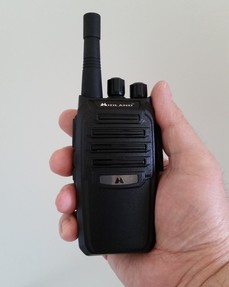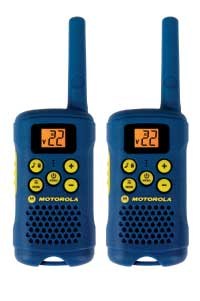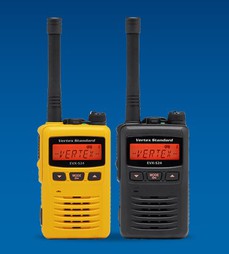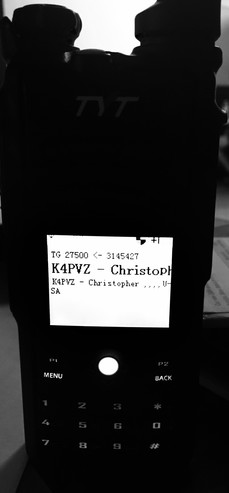Range is a popular word in the world of portable handheld two way radios or walkie talkies. Ironically, it's also one of the least understood among the masses, which makes it quite controversial. This simple, five letter word is easy to enunciate, yet it is perhaps one of the most complicated to resolve in the consumer radio marketplace.
The reason for this is contained in the word itself. Although range has an absolute definition, it is defined by a range of variables. In short, range is absolutely relative.
The Variables of Range
A number of variables determine actual range. These include (in no particular order):
- Type of Radio Signal
- Obstructions
- Terrain
- Distance to Horizon
- Antenna
- Radio Power (Wattage)
- Atmospheric Conditions
Type of Radio Signal
The type of radio signal is a significant variable in determining range. Lower frequencies such as those on the VHF band travel farther but can be more easily blocked. Higher frequencies in the UHF band do not travel as far but can pass around obstacles more easily. The GMRS operates on UHF frequencies around 460 MHz, so our range estimations will be based on that variable.
Obstructions
GMRS radios operate on "line-of-sight", which simply means that as long as they or their operators can clearly "see" each other with nothing between them to obscure their view, the radios should be able to communicate with one another. Anything that gets in the way can adversely affect the line of sight. Such things include, but are not limited to, hills, trees, bridges, buildings, vehicles and anything else that can potentially block, deflect or divert the radio signal away from its intended target.
Terrain
The terrain between the radios is another important consideration. If the area is flat with few or no obstructions, the signal can freely travel unencumbered towards the horizon, even at a very low power. If the terrain is populated with vegetation such as trees or heavy brush, such obstructions can slow or eventually block the signal at some point along the way. Higher frequency GMRS radio signals cannot penetrate earth, so if the terrain is hilly or mountainous, the distance the signal can travel may be reduced significantly.
Distance to Horizon
Since the earth is round, GMRS radio signals do not have an unlimited line of site across the entire globe. At some point, they are blocked or diverted by the curvature of the earth. This is the earth's horizon. In an area of open, level terrain with no obstacles or over open water, the average distance to the horizon is just a few miles. On the roof of a very tall building or mountaintop, the horizon could be ten, twenty or thirty miles. The higher you are over the terrain, the greater the distance between you and your horizon, hence the farther the line-of-site. Conversely, the closer you are to the ground, the nearer you are to your horizon, thus the shorter your line-of-sight.
Antenna
The antenna is one of the most critical components of a radio. It converts the radio signals into the electrical signals the radio can understand and vice versa. Without an antenna, your radio could neither receive nor transmit across any perceptible distance at all. This means the type, height, location and quality of the antenna will have a significant impact on the overall range of the radio signal.
Radio Power (Wattage)
Obviously, the more powerful a signal, the greater its potential range. Or is it? When comparing a 5 watt radio transmission to a 50 watt signal, the difference in range can be quite significant. However, when comparing two low power signals between 1 and 5 watts, the difference is not as impressive. Depending on some of the other variables, there may not be much of a difference at all. For instance, an entry level GMRS handheld walkie talkie operating at about half a watt in an open field may have about the same coverage as a five watt model in the middle of a large city. Depending on the distance to the horizon and/or the height and quality of antenna, it may be even better! The moral? Don't let the wattage rating alone dictate your choice of radio. Consider all of the variables.
Atmospheric Conditions
One variable that is sometimes overlooked is the atmosphere. While not as disruptive as many other variables, atmospheric effects such as rain, snow and fog can interfere with a radio signal and may slightly reduce overall range.
The Confusion with Range
Considering all the variables, calculating range still doesn't seem too complicated. It isn't, really. So, why the confusion? To answer that question, all we need to do is pick up a brand new pack of consumer FRS or GMRS radios and look at the packaging.
One of the first things you may notice, more often than not, is a great big number emblazoned in bold and prominently displayed on the front of the package, usually designated in mileage. It may read 16 Miles, 26 Miles, 36 Miles or more, and is implied to be the mileage rating of the radios enclosed. The higher the number, the greater the range, and the more powerful or higher wattage the radios are perceived to be. But are they? Not necessarily.
Remember, power/wattage is only one of the many variables used to calculate range, and as we've noted, it is not the most influential. After all, a low wattage handheld radio can have a greater range than a higher wattage handheld radio within reason, provided the other variables exceed those of the higher wattage model.
It's easy to pick out the big bold number on the box, but miss the words "up to" in the small print above it. As a result, many who latch onto the large font and tune out the tiny type naturally assume the double digit figure is an absolute, when it isn't. In fact, the mileage on the package doesn't really figure into the range equation much at all.
The Truth About Range
Are the manufacturers lying? Well, technically, maybe no. If the radio is advertised to transmit (up to) 36 miles, you might get 36 miles - that is, if you're transmitting from a mountaintop or hovering somewhere in the upper troposphere and the horizon is at least 36 miles away. If you're orbiting the earth and there are no obstructions, you might even get more. But then, how often do you go there? Exactly.
The truth is, the number on the box only indicates how far the radio has supposedly been tested to transmit and receive under what the manufacturers refer to as optimal conditions. This phrase or a variation thereof is usually found in even smaller type somewhere on the back, side, or bottom of the box. Unlike those big numbers, you'll probably have to look around to find it.
Optimal vs. Actual Range
Forget the fantasy figures. Let's get real. If those numbers mean anything, they serve as a general reference as to which tier the radio is placed within the industry. It works like this. GMRS radios with a low optimal range of 10-16 miles typically have basic features and functionality. These are considered low-end or entry level models. Those labeled as a higher optimal range of 35 miles and above with the most wattage, add-ons and options are considered the high-end models. The mid-tier models consist of everything in-between. While not perfect, it's a fairly reliable method and goes a long way towards simplifying the confusing marketing hype surrounding the range claims created by the manufacturers of FRS/GMRS two way radios.
To simplify things further, the chart below was created to convert the manufacturer's advertised range to an actual, real-world range and assigned to a tier as a range rating. The chart is further divided by type of terrain for greater accuracy. Note: These are real world estimates only.
Rick's Simple GMRS Radio Range Chart
| Urban Terrain |
| Advertised Range | Actual Range | Range Rating |
| 16 miles | 1-2 blocks | Low |
| 20 miles | 2-3 blocks | Low |
| 26 miles | 3-4 blocks | Mid |
| 30 miles | 4-6 blocks | Mid |
| 36+ miles | 0.2-0.25 mile | High |
| Suburban Terrain |
| Advertised Range | Actual Range | Range Rating |
| 16 miles | 300-800 feet | Low |
| 20 miles | 0.1-0.3 mile | Low |
| 26 miles | 0.4-0.5 mile | Mid |
| 30 miles | 0.6-1.0 mile | Mid |
| 36+ miles | 1-2 mile | High |
| Open (Level) Terrain |
| Advertised Range | Actual Range | Range Rating |
| 16 miles | 0.5-1 mile | Low |
| 20 miles | 1-3 miles | Low |
| 26 miles | 3-4 miles | Mid |
| 30 miles | 4-5 miles | Mid |
| 36+ miles | ~6 miles | High |
| No Terrain |
| Advertised Range | Actual Range | Range Rating |
| 16 miles | Up to 16 miles (est.) | Low |
| 20 miles | Up to 20 miles (est.) | Low |
| 26 miles | Up to 26 miles (est.) | Mid |
| 30 miles | Up to 30 miles (est.) | Mid |
| 36+ miles | Up to 36+ miles (est.) | High |
Related Resources
30 Miles? The Truth About Range
Getting The Most Range From Your Radio
The Two Way Radio Show TWRS-05 - Radios in Range
The Two Way Radio Show TWRS-45 - The Truth About GMRS Radio Range
Radio 101 - The truth about FRS / GMRS two way radio range
How To Optimize Range for Motorola Talkabout Two Way Radios





































